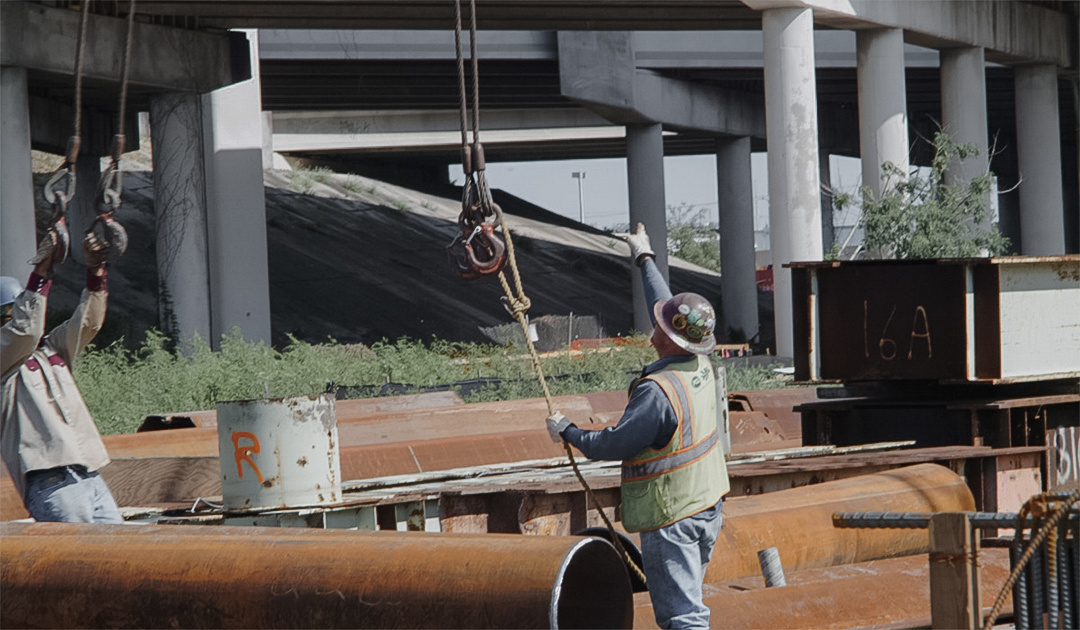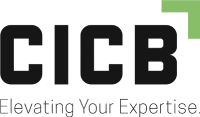
TAG, WE’RE ALL “IT”
Tag lines are used to help position large or ungainly loads during a lift. That sounds so simple and may be thought of as “the easiest job” around the crane and rigging community, but several fatal accidents have been attributed to the lack of knowledge and/or training relevant to tag lines.
The obvious question is the need for a tag line in the first place. Under certain Federal and State OSHA regulations, failure to use a tag line on a freely suspended load could be a violation of law. Regulations where tag lines are mentioned include:
-
Construction OSHA §1926.1417(w) states “A tag or restraint line must be used if necessary to prevent rotation of the load that would be hazardous.”
-
Hoisting Personnel OSHA §1926.1431(k)(5) regulates “tag lines must be used when necessary to control the platform.”
-
General Industry OSHA §1910.180(h)(3)(xvi) says “…a tag or restrain line shall be used when the rotation of the load is hazardous.”
-
ASME B30.5-3.1.3.4 (h) Responsibilities of the Rigger, states “Installing and using a tag line(s) when additional load control is required.”
The employer or controlling entity may well have additional requirements.
What is a Tag Line?
Per OSHA §1926.1401, a tag line is “a rope (usually fiber) attached to a lifted load for purposes of controlling load spinning and pendular motions or used to stabilize a bucket or magnet during material handling operations.”
Tag lines should be used to assist in the stabilization of a load while enabling personnel to maintain a safe distance from the load. The pre-lift briefing is the appropriate time to determine the need for a tag line.

Rope Selection
-
Non-conductive is extremely important when in proximity to power sources. Polypropylene is preferred by many for this reason. Poly ropes should have a preformed eye in one end as knots tend to come undone.
-
Both ends should be taped, wired, fused, or back spliced to prevent fraying.
-
No marlin, hemp, or other rough material. Smooth nylon with leather gloves is recommended.
-
The tagline should be just long enough, but not too long, to avoid entanglements.
-
Tag lines should be large enough in diameter for a person to handle with or without gloves.
-
Extension cords and other makeshift items are prohibited for use as tag lines.
Attachment points
-
The only knot in any tag line should be the one that is tied to the part.
-
Attachments should be located as far as practicable from the CG of the load for increased leverage.
-
Tie the rope directly onto the load, preferably with a bowline knot, if no eye is available.
-
Never hook a tag line to a basket hitch. Avoid attaching the tag line to the rigging if possible.
Proper Use
-
The correct point in time to attach the tag line is BEFORE the lift commences.
-
Whomever is assigned to attend a tag line should be properly trained and/or experienced.
-
Two tag lines may work better than one.
-
Special attention to blind spots and obstructions must be considered prior to the lift.
-
The horizontal angle should never exceed more than 30 degrees above the horizon.
-
Tag lines only work when the proper tension is applied at the right time and the correct angle.
Common Mistakes
-
Never wrap a tag line around your hand, or any part of your body; or let anyone else do it.
-
Do not tie or “stop-off” a tag line to any handrails; forklift tines; trailer hitches, etc.
-
There should be no knots or entanglements of any kind.
-
Do not impose a side load with a tag line. Your job is to ‘steer’ the load, not hold it.
-
Other items or aids, in lieu of a tag line, such as sticks or snake-sticks, usually require approval from Safety.
The Importance of Tag Line Safety
Aaron Conrad, one of CICB’s Subject Matter Experts, related a fatal incident that occurred while working at a Naval facility. “While working at a Naval facility for several years we had one crane related death in my time there. A 19-year-old raw recruit was assigned to tag a shore power cable during descent into the drydock. A signalman was in view of the operator; on the far side of the drydock. The tag line recruit was not visible to the operator, as he was nearly beneath the cab of the large waterfront crane.
The initial movement was slow, as you might expect, and the signal person eventually lost patience and signaled an increase in lowering speed. The operator observed the signal to ‘go down faster’ which he obeyed. The untrained seaman was surprised by this since the load was only halfway down. The rope was now accelerating through the recruit’s gloves; he took one step back – right into the coil of rope. The rope tangled his leg in a half hitch, dragging the young man over the handrail, and into space.”
Tag Line Safety by the Numbers
According to studies by the Centers for Disease Control, 24 out of 40 crane-related fatalities happened because of rigging failure. That is 60%, and a huge improvement is possible if a competent person notices that a synthetic web sling is worn, a tag line is used incorrectly, a periodic inspection is not forgotten, or safety standards are not ignored.
Enhancing Safety with CICB
At CICB, all our instructors have previous work experience in the field, and they are aware of the common mistakes that are made daily. In addition to learning how to manage, operate, and inspect equipment, each of CICB’s educational programs teaches the following:
-
OSHA and industry-specific standards
-
Shortcuts that are commonly used and why they are unsafe.
-
How to turn unsafe practices into safe ones
-
Analyzation of accidents and how they could have been prevented.
Once you are ready to begin investing in your training, you can view more information here that will help you decide which type of training is best for your employees.
About The Author
 CICB’s Texas Operations Manager John O’Connor, has held the position of senior instructor/inspector for CICB since 2006. He has a total of 28 years of experience in training, inspections, operations, planning, maintenance, administration, and personnel management for various types of lifting and earth moving equipment. He maintains a high level of proficiency in teaching crane and heavy equipment operations, inspections, and rigging using best practices, applicable OSHA, ASME and API standards and regulations. O’Connor holds NCCCO certifications for Operator, Inspector, Rigger, Signal Person, and Lift Director. He is also a NCCCO accredited Practical Examiner for Mobile and Articulating Boom Cranes, Overhead Cranes, Rigger, and Signal Person.
CICB’s Texas Operations Manager John O’Connor, has held the position of senior instructor/inspector for CICB since 2006. He has a total of 28 years of experience in training, inspections, operations, planning, maintenance, administration, and personnel management for various types of lifting and earth moving equipment. He maintains a high level of proficiency in teaching crane and heavy equipment operations, inspections, and rigging using best practices, applicable OSHA, ASME and API standards and regulations. O’Connor holds NCCCO certifications for Operator, Inspector, Rigger, Signal Person, and Lift Director. He is also a NCCCO accredited Practical Examiner for Mobile and Articulating Boom Cranes, Overhead Cranes, Rigger, and Signal Person.





